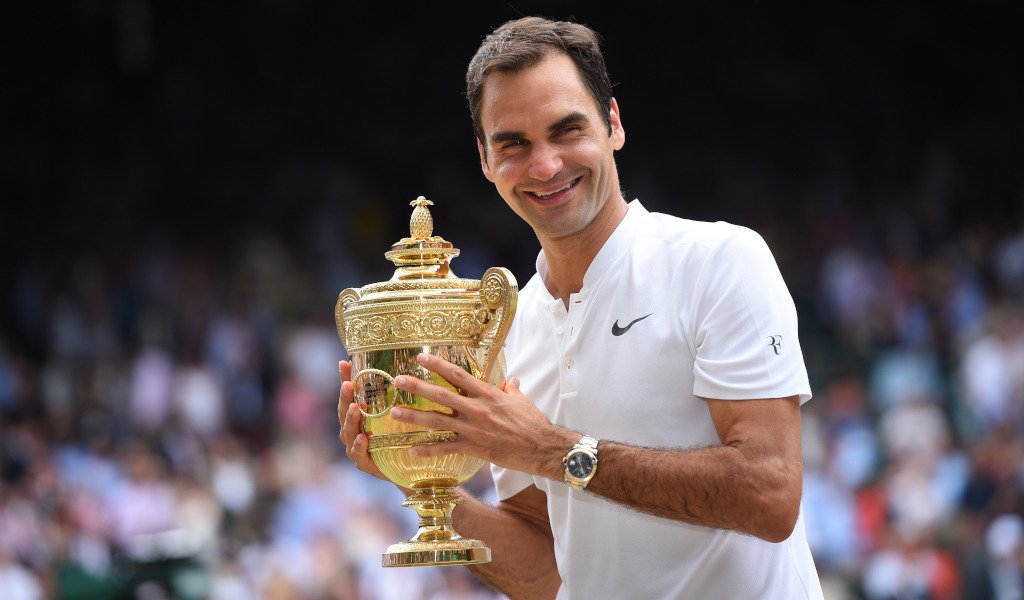A Glimpse into Wimbledon: For more than a century, spectators have been enthralled with Wimbledon, the oldest and most esteemed tennis competition globally.
This legendary tournament, which takes place every year at Wimbledon, London’s All England Club, has not only featured some of the best tennis players in the world but has also solidified its place in the hearts of sports fans everywhere.

Let’s journey through its rich past and discover the incredible champions who have made a lasting impression on this magnificent platform.
The Birth of Wimbledon
The first Wimbledon Championship was held on July 9, 1877, marking the beginning of the tournament’s history. The All England Croquet Club created the competition in an effort to spark interest in lawn tennis once more. There were only 22 participants in the men’s singles competition at the first Championships, which took place on the All England Club’s grass courts.
In the end, Spencer Gore triumphed over William Marshall to win the inaugural Wimbledon championship. This humble beginning served as the impetus for what would grow into an international sporting extravaganza.
Evolution Through the Decades
1880s: The Early Years
As the 1880s progressed, Wimbledon started to take shape. In 1884, the All England Club launched the women’s singles competition, with Maud Watson emerging as the inaugural female victor. With the addition of the men’s doubles in 1884 and the women’s doubles in 1887, the tournament’s growth continued. The Championships became more well-known, bringing in more viewers and competitors every year.
1900s: The Golden Age
Wimbledon had its heyday in the early 1900s. Legendary athletes like the great American Maurice McLoughlin, who won the men’s singles championship in 1896 and 1897, rose to prominence during the competition. Notable players like Dorothea Lambert Chambers, who won seven titles and dominated the women’s singles from 1903 to 1914, also rose to prominence in the 1900s.
1920s-1930s: The Age of Champions
There were several tennis legends who dominated the interwar era. Champions such as Helen Wills Moody, who won her first Wimbledon title in 1927 and went on to win eight singles titles, rose to prominence in the 1920s and 1930s. Rene Lacoste, a Frenchman who developed the renowned Lacoste brand after winning three Wimbledon titles in the 1920s, graced the men’s division of the competition.
1940s-1950s: Post-War Revival
Wimbledon saw a renaissance following World War II, with competition returning in 1946. New winners emerged in the post-war era, including as the magnetic American player Jack Kramer, who took home the men’s singles titles in 1947 and 1948. Australian player Doris Hart, who won three Wimbledon singles titles in the 1950s, rose to prominence on the women’s side.
The Modern Era: Icons of Tennis
1960s-1970s: The Rise of the Greats
Tennis legends began to emerge in the 1960s and 1970s. Rod Laver won his first Wimbledon championship in 1961. He is the only player to win all four Grand Slam titles in a calendar year twice. In the women’s division, Billie Jean King emerged as a trailblazer after taking the lead in the fight for tennis equality and winning her first Wimbledon championship in 1966.
1980s: The Golden Age of Rivalries
The 1980s were characterized by intense rivalry and memorable games. John McEnroe and Björn Borg rose to prominence, with Borg taking home five trophies in a row between 1976 and 1980. McEnroe was a fan favorite because of his fiery nature and extraordinary skill. Martina Navratilova, who dominated the women’s singles circuit with nine titles—including a record-tying nine straight from 1982 to 1987—also rose to prominence during this decade.
1990s: The Era of the Big Three
With the rise of the Big Three—Pete Sampras, Andre Agassi, and Richard Krajicek—the 1990s saw the start of a new era in tennis. Known for his strong serve, Pete Sampras won seven Wimbledon championships from 1993 to 2000. Steffi Graf won seven Wimbledon singles titles on the women’s side thanks to her all-around skill; her triumph over Martina Navratilova in 1991 stands out in especially.
The New Millennium: Dominance and Records
2000s: Federer’s Reign
At Wimbledon in the new millennium, Roger Federer dominated. Federer won his first Wimbledon championship in 2003 thanks to his elegance on the court and unrivaled consistency. As he went on to win an unprecedented eight titles, he cemented his reputation as one of the best players in Wimbledon history.

Venus and Serena Williams dominated the women’s singles circuit throughout the 2000s as well. Venus won five championships, while Serena won seven, including a historic victory in 2002 at the age of 20.
2010s: The Rise of New Champions
The rich heritage of Wimbledon was carried on throughout the 2010s. Following his maiden Wimbledon victory in 2011 and the subsequent four titles, Novak Djokovic became a formidable force. Andy Murray became the first British man to win the singles championship since Fred Perry in 1936 when he triumphed at Wimbledon in 2013, ending the country’s drought. In the women’s division, Petra Kvitova won two titles in 2011 and 2014 thanks to her potent left-handed stroke.
Recent Years: The Return of Legends
2020s: A New Era
Wimbledon remains a platform for amazing tennis in the 2020s. The COVID-19 epidemic in 2020 presented the tournament with never-before-seen difficulties, forcing its cancellation for the first time since World War II. But it made a spectacular comeback in 2021 with exciting new matchups and champions.
A highlight of the year was Novak Djokovic’s pursuit of the calendar-year Grand Slam. He matched the record for most Wimbledon men’s singles titles with his sixth Wimbledon victory.
Legendary Champions and Their Stories
Many champions with distinct histories and achievements to the sport have graced Wimbledon over the years. The following luminaries have had a lasting impression on the Championships:
Rod Laver
The accomplishments of Rod Laver are legendary. He is the only player to have won all four Grand Slam titles in a calendar year twice, a feat he accomplished in 1962 and 1969. His victory at Wimbledon in 1962 and 1969 added to his illustrious career, making him a true tennis icon.
Billie Jean King
Billie Jean King’s impact on and off the court is monumental. She won her first Wimbledon title in 1966 and went on to win six singles titles. King’s advocacy for gender equality and her victory over Bobby Riggs in the “Battle of the Sexes” in 1973 have cemented her legacy as a trailblazer in sports.
Serena Williams
Serena Williams’ dominance at Wimbledon is unparalleled. With seven singles titles, her victories in 2002, 2003, 2009, 2010, 2012, 2015, and 2016 have showcased her incredible skill and resilience. Her rivalry with sister Venus Williams and her comeback victories have made her one of the most beloved figures in tennis.
Martina Navratilova
Martina Navratilova’s reign at Wimbledon is legendary. With nine singles titles and 20 Grand Slam doubles titles, Navratilova’s aggressive play and tactical acumen made her a formidable opponent. Her dominance in the 1980s remains a benchmark for excellence in women’s tennis.
The Tradition and Spectacle
Wimbledon is a celebration of custom, grace, and good sportsmanship rather than just a tennis competition. Wimbledon is a spectacle unlike any other, from the recognizable white attire and the strawberries and cream to the rigorous commitment to tradition and the royal support. The All England Club’s scenic location and verdant courts contribute to the tournament’s distinctive atmosphere, which makes it an unforgettable experience for both players and spectators.
Conclusion: Wimbledon’s Enduring Legacy
Wimbledon serves as a reminder of tennis’ lasting vitality as we reflect on more than a century of history. It has seen innumerable instances of genius, sorrow, and victory. Generations of players and fans have been inspired by Wimbledon, a global athletic symbol since its modest origins in 1877. In addition to winning championships, the winners who have graced its courts have left their marks on sports history.
Wimbledon‘s history includes anecdotes, emotion, and the ageless beauty of the game in addition to records and prizes. We celebrate the history, the champions, and the essence of Wimbledon—where dreams come true and legends are created—as we anxiously anticipate the Championships each year.





